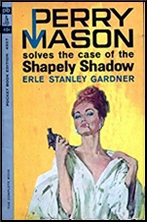REVIEWED BY DAVID VINEYARD:
BART PAUL – Under Tower Peak. Tommy Smith #1. Arcade, hardcover, April 2013; paperback, November 2014.

Early in the season we rode up to the forks to fix the trail above the snow cabin. The winter had been good and the aspens had leafed out down in the canyon at the edges of the meadows. Above The Roughs up in the tamarack pines it was shady and cool once the trail got narrow, and the only sounds were the steady scuff of the horses’ hooves as they kicked up little puffs of dust and the clack when an iron shoe struck a rock as they climbed, the rush of the creek off in the timber, and the breeze through the tamarack limbs.
It isn’t often when reading a mystery, Western, thriller, or combination of the three I find myself thinking in terms of writers like Ernest Hemingway, Tom Lea, Cormac McCarthy, and Jim Harrison, and at the same time hearing echoes of Craig Johnson, Elmore Leonard, James Crumley, and Stephen Hunter, but Bart Paul’s Under Tower Peak evokes all those and in the best way possible, and manages a sense of humor to boot, as hero Tommy Smith and his pal Lester lie under the stars in California’s Sierra Nevadas.
“In the moonlight the plane looks like some spacecraft crashed on Mars,†he (Lester) said. “You ever think about outer space?â€
“Not ever.â€
“You see those movies with guys standing all alone on some distant planet a gazillion miles out in deep space with some weird moon on the horizon. But what if we’re the ones on the distant planet and all this just over our heads is deep space, all cold and huge and empty? You ever think that lying here we’re flying a million miles an hour in outer space right now?â€
“One of us is, that’s a fact.â€
Loosely suggested by the crash of businessman adventurer Steve Fossett’s plane in 2008, the novel finds former sniper Tommy Smith and his friend Lester in the high country where they discover the crashed plane of a missing billionaire adventurer. That’s a seemingly harmless enough fact, but it soon turns complicated when Lester takes an expensive Rolex off the dead man and some of the money carried in a bag on the plane. Once back in civilization his less than ethical sometime girlfriend Callie Dean, local tramp with a not quite heart of gold, contacts the family lawyers about a reward and when she shows up dead after talking to a man in a fancy car the stops are out.
Lester’s moment of greed has let loose the hell hounds as the dead man’s trophy wife and drug lord son, and their legal and illegal cadre of backers are soon threatening Tommy and Lester, and crawling all over the Sierra Nevada’s willing to kill for something related to the dead man and the crash that Tommy has no clue to. Innocent people are dying and Tommy’s one time friend idiot Sheriff Mitch isn’t up to handling the mess he has on his hands.

As the wife’s attractive lawyer Nora explains why Gerald, the son needs the father to be alive or he could lose a fortune she warns Tommy:
“…Gerald’s father is dead,†she said. “You saw the body?â€
“He’s dead, alright. Lester and me were as close to the body as I am to you.â€
“That, Sergeant Smith,†she said, “makes you both very inconvenient people to leave walking around.â€
That’s setup enough for a solid tale of adventure, violence, and the hard won values of uncorrupted but not scrupulously honest men vs corrupt and ruthlessly violent ones, but Paul ups the ante not only by his evocative writing, but in his character of his reluctant but all too proficient hero who turns out to be equal parts John Wayne, Robert Mitchum, and James Bond.
“You scared me when you pulled out the knife,†she said.
“Probably not much I could have done.â€
She sort of leaned in to me and her heat just poured out. I held the shirt tight around her.
“I doubt that,†she said. “It was like you were on a mission or something.â€
Even the gun-lore here, which in some writers’ hands is little more than gun porn, is part of the plot and the nature of the protagonist, never overdone, or less than vital to the story at hand.
It doesn’t take much to guess Smith and Lester are going to find themselves out numbered and out gunned against a small army of dangerous and violent people, but the fact that Paul makes that pay off again and again in ways that evoke the best writers of this kind of tale, James Lee Burke is another name that comes to mind, is remarkable.
After Gerald’s Cuban friends blow up his cabin Tommy lies in wait on a bridge for them.
When he was almost halfway across, I reached down and felt for the wire and the big plastic switch and thumbed it on. It was a full second before the generator fired up about a hundred yards away and another second until four big halogen spots flared on in a semicircle behind me and lit up that bridge like noon. The Escalade stopped hard, then started to back up, slow at first, the driver halfblind from the spots. I thumbed off the safety then and squeezed off a round into the road on my side of the bridge just so they could hear the shot and see the dirt kick up. The driver hit the gas, and one back wheel started to spin on the iron plate between the planks. In that bright light I could see the two Cubans in the front seat scrambling as the car drifted ass-first to one side. When the spinning rear wheel hit the planks, it bit into the wood and got instant traction. The driver overcorrected, and that wheel slid off the upstream edge of the bridge. I fired a second shot way over their heads and saw the front tires jerk sideways like they thought they could still back themselves out of trouble. The Escalade tilted, and the left front wheel went over the edge too. The whole thing hovered there for a second until it rolled off the bridge and splashed into the creek on its side. With the front windows open it sunk fast. When I could see the headlights under water, I snapped off the switch, and the spotlights dimmed out and the bridge went dark.
Naturally at some point Tommy and Lester decide the law isn’t going to take its course in time to save their lives or avenge Callie, who was trying her hand at extortion, and decide to take things in their own hands against the advice of Deputy Sarah Cathcart who tries to protect them both.
This isn’t just an action suspense piece either, there is a decent mystery and noirish plot and some good detective work along the way putting the complicated ends of the story together with billions of dollars at stake, and something else Tommy can’t guess at drawing all the firepower, legal and not.
One more good rain and it would be as if that old boy had never hit that mountain, had never missed that pass. It would be like he was just flying around over us forever, trying to find his way home. At least that’s how I like to think of it. And except for me, and now Sarah, any folks who would tell otherwise are dead. We kept on riding past The Roughs and disappeared into the trees.
Paul is a writers’ writer, literate and literary without beating it over the readers head. Reading this book is not only a pleasure as escapist literature, but in watching a capable and gifted writer practice his craft with precision and style. His work invokes not just the obvious names, but writers like Edward Abbey, Oliver Lange, Newton Thornberg, Will Bryant, A. B. Guthrie, and Clair Huffaker, and that is notable company for any writer, in the genre or out.
The Tommy Smith series —
1. Under Tower Peak (2013)
2. Cheatgrass (2016)
3. See That My Grave is Kept Clean (2019)

